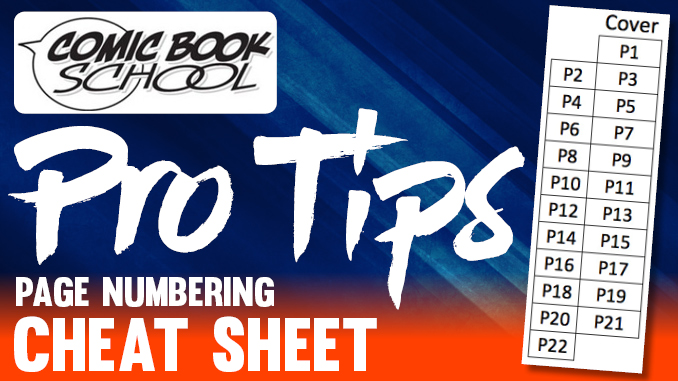

Originally published April, 2016 – Updated November 1, 2022
Here’s a handy guide for page numbering of facing pages. I’m not sure how other writers do it, but when I write a comic, I like to keep track of my facing pages. A few years ago, I wrote the left and right page on a sticky note and stuck it to the edge of my monitor. Over the years, it’s gotten a little grungy looking, so I made a new one, which I’ve included above.
Every right-hand page (odd numbers) is where you want to put a “mini-cliffhanger.” The idea is that you want to tease someone to turn the page with a question or other incentive to get the reader to turn the page with passion.
Example:
Character #1: Who is the baby’s father?
Character #2: You really want to know? Fine. The baby’s father is…
Makes you want to turn the page to get the answer, right? When I write, I try to build these little cliffhangers into each right-hand page.
Also, when I write a scene, I try to be aware of the page spreads, which can be important if you ever want to include a massive two-page splash spread.
When outlining, I use my grid to work backwards from Page 22. If I’m writing a series, I need to know how much room I will need to write the issue cliffhanger, so I don’t want to mess up that ending. It’s helpful to have a page numbering cheat sheet like this. Print this and tape it to the edge of your monitor or to the bottom of your laptop. It’ll come in handy as you plot your stories.
Consider how you want your comic book story to end. Is it a cliffhanger that leads to the next issue of your comic series? Or is it the big story climax that you’ve been building up to over the past four issues?
Either way, mark Page 22, then figure out how many pages you need to lead up to that scene. Remember that you are writing for a visual medium, so make sure you end with something that will resonate visually.
Write to the ending with the maximum impact because that’s how people will ultimately judge your story or how they will determine if they want to buy the next issue of your series.
NOTE: Since this original writing, comics are now usually 20 pages per issue.
Check out this video where we discuss the page-turning cliffhanger on CBS|Live.
And, hey, don’t forget to check out my books for more useful resources and photo reference!
Check out these great articles:
Untold Story of Wizard Magazine
Comic Publisher Submission Guidelines
Pro Tips graphic courtesy of Grant Shorter



Awesome this is great article! Thanks for sharing.
Writing a comical book is not all fun and games. You need to consider a lot of points for it to become effective.
How to Write a Comical Book: 5-Step Guide to Successful Writing
Hope this will also help. Thank you.